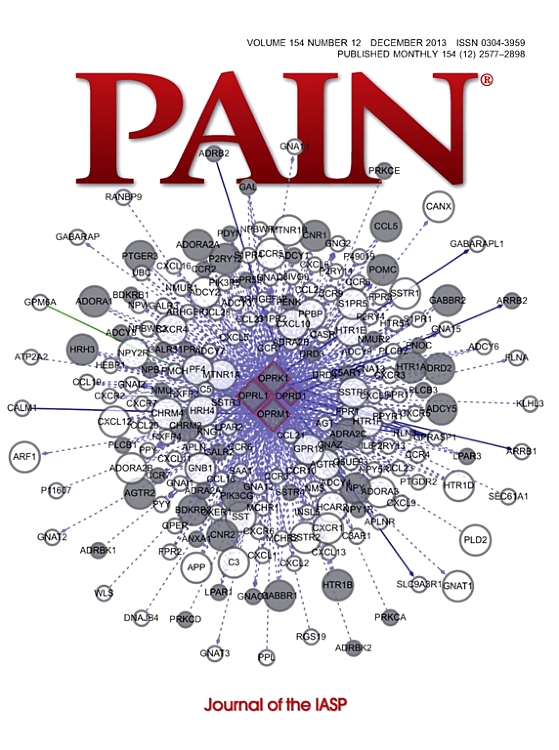Neurophysiological encoding of aversive prediction errors.
IF 5.9
1区 医学
Q1 ANESTHESIOLOGY
引用次数: 0
Abstract
Aversive prediction error (PE) brain signals generated by unexpected pain or pain absence are crucial for learning to avoid future pain. Yet, the detailed neurophysiological origins of PE signaling remain unclear. In this study, we combined an instrumental pain avoidance task with computational modeling and magnetoencephalography to detect time-resolved activations underlying pain expectations and aversive PE signals in the human brain. The task entailed learning probabilistically changing cue-pain associations to avoid receiving a pain stimulus. We used an axiomatic approach to identify general aversive PE signals that encode the degree to which the outcome deviated from expectations. Our findings indicate that aversive PE signals are generated in the alpha band (8-12 Hz) by the midbrain/diencephalon, lateral orbitofrontal cortex, and ventrolateral prefrontal cortex approximately 150 milliseconds after outcome delivery. Moreover, alpha oscillations in these regions also encoded pain expectations before the outcome. We speculate that this may facilitate the rapid generation of PEs by allowing outcome-related nociceptive activity to be integrated with ongoing predictive signals. Finally, decisions to avoid pain recruited alpha oscillations in the anterior cingulate and dorsomedial prefrontal cortices, suggesting their active engagement in comparing predicted action values. Overall, our data reveal the rapid neurophysiological mechanisms underlying the generation of aversive PEs and subsequent decision-making.厌恶预测误差的神经生理编码。
由意外疼痛或疼痛缺失产生的厌恶预测错误(PE)脑信号对于学习避免未来疼痛至关重要。然而,PE信号的详细神经生理起源仍不清楚。在这项研究中,我们将仪器疼痛回避任务与计算建模和脑磁图相结合,以检测人脑中疼痛预期和厌恶PE信号的时间分辨激活。这项任务需要学习概率变化的线索-疼痛关联,以避免受到疼痛刺激。我们使用了一种公理方法来识别一般的厌恶PE信号,这些信号编码了结果偏离预期的程度。我们的研究结果表明,在结果传递后约150毫秒,中脑/间脑、外侧眶额皮层和腹外侧前额叶皮层在α波段(8-12 Hz)产生厌恶性PE信号。此外,这些区域的α振荡也在结果之前编码了疼痛预期。我们推测,这可能通过将结果相关的伤害性活动与正在进行的预测信号相结合,从而促进pe的快速产生。最后,避免疼痛的决定调动了前扣带和背内侧前额叶皮层的α振荡,表明它们积极参与比较预测的动作值。总的来说,我们的数据揭示了产生厌恶pe和随后决策的快速神经生理机制。
本文章由计算机程序翻译,如有差异,请以英文原文为准。
求助全文
约1分钟内获得全文
求助全文
来源期刊

PAIN®
医学-临床神经学
CiteScore
12.50
自引率
8.10%
发文量
242
审稿时长
9 months
期刊介绍:
PAIN® is the official publication of the International Association for the Study of Pain and publishes original research on the nature,mechanisms and treatment of pain.PAIN® provides a forum for the dissemination of research in the basic and clinical sciences of multidisciplinary interest.
 求助内容:
求助内容: 应助结果提醒方式:
应助结果提醒方式:


